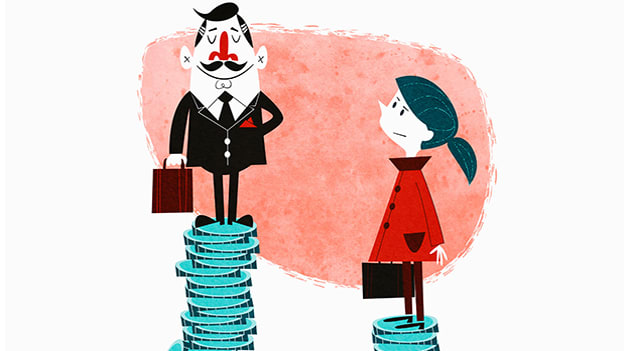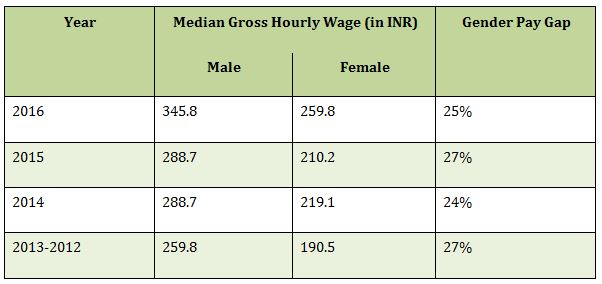What the BBC gender pay gap tells us

Very recently, the British Broadcasting Corporation (BBC) published the salaries of BBC’s highest earners. While the intentions of the world’s oldest national broadcasting organization would have been to reflect a transparent image; the transparent picture reminded the world of a staunch reality – a reality summed up in three words – “Gender Pay Gap”.
BBC has an almost equal representation of the two sexes in its total workforce. The high earner's list of 96 people though, had a two-third representation of men. Implying when it comes to the top salaried jobs, women fall significantly behind at BBC. The women, who have indeed managed to feature on the list, find themselves to be paid less than their male counterparts for the same work. Male and female presenters of the same programs, such as Newsnight or Radio 4’s Today program, have significantly different wages.
A timely reminder
One of the first requests for equal pay dates back to February 1869, when in a letter to the Editor of the New York Times, the author brought the pay disparity between men and women in the United States Government’s Treasury Department. The arguments, while different, still keep floating in for closing the gender pay gap. It’s astonishing that even after close to one and a half century, the gap still exists – and that too in the world’s largest employer in the broadcasting industry. This is all but a timely reminder to one and all that wage disparities still exist.
The problem
The most basic of issues is that there is a clear and significant gap in average pay between men and women. Globally, women are found to earn slightly more than just half of what men earn, according to the World Economic Forum’s Global Gender Gap Index. A woman earns $10,778 on an average compared to a man’s $19,873.
India is ranked 103 (in a survey of 144 countries) globally on the metric of wage equality, highlighting how far behind the nation is when it comes to paying fairly to the two sexes. According to the World Economic Forum, women earn 57% of what their male counterparts earn for performing the same work. The Monster Salary Index 2016, upon analyzing its dataset of candidates, found that women in India earn 25% less than men. An average man’s gross hourly salary of Rs. 345.8 was found to be much more than a woman’s Rs. 259.8 gross hourly salary.
The gender pay gap, over the years, has been consistent and fluctuated in a very zigzag pattern. No real trend in terms of a steady (even if slow) reduction in the gap has been witnessed.

Looking deeper
If one were to look deeper at the problem, the real issue may not be with equal pay for equal work and more to do with women representation in high paying jobs or in senior positions. With average compensations increasing every year (that too exponentially for higher ranks), an increased imbalance in the representation of men and women skews the average wage in favor of men.
Explained
The average wage of a male employee is Rs. 100, and that of a female employee is Rs. 80.
Total number of employees in the company is 100 (60 men, 40 women)
No. of men in senior positions – 4; No. of women in senior positions – 1.
All of them earn the same wage of Rs. 300
Everyone in senior position gets a wage increment of 50%. Now they are all earning Rs. 450.
The average wage of men now becomes Rs. 100, while of women it increases to Rs. 83.75
The wage gap percentage increases from 20% to 24%.
Inference: Even a just and fair increment in salaries and equal pay for equal work will not close the gap if women are under-represented in higher paying roles. It will continue to increase the gap.
As one starts looking up the professional development ladder, the number of women steadily starts decreasing. As revealed by the MasterCard Index of Women’s Advancement and as explained in this feature as a part of the Power Women campaign by People Matters, women are neck and neck in terms of representation in capability, secondary education and tertiary education in India. The numbers go significantly down for employment and workforce participation. The gap between men and women widens further for business leaders, leadership and business owners.

Source: People Matters
Due to less number of women at work, the pipeline of women for leadership roles “starts small and continues to shrink”. See graphic below:

In summary
Three major problems related to gender labor gap exist -
1. A significant average wage gap between men and women
2. A wage gap between men and women for the same work
3. A minuscule representation of women getting promoted to senior positions
In conclusion
While there is a pressing need to create a more balanced and equally represented workforce, it is also important to look at the picture holistically. There can be three distinct circumstances behind less women at senior positions:
1. Women are not given fair chances
2. Women are given equal chances, but they choose to not take up certain roles due to societal constructs (such as childcare, being the homemaker in parallel to work, etc.)
3. Women choose not to take those roles and it is an independent conscious decision not influenced by societal constructs
Organizations have complete control and are solely accountable on the first pointer. It is their duty to be balanced and fair, keep all unconscious biases out while hiring, engaging, coaching, and assessing individuals.
The third pointer is a noteworthy mention, and something that is often overlooked by gender equality advocates. Sometimes, women make conscious choices of not climbing up the career ladder, choices which are their own and not dictated by social constructs. Albeit, the line between pointer 2 and 3 is extremely thin. It isn’t easy to distinguish whether the decision to not go higher up the ranks is an independent one, or is being taken because of the existing social constructs and constraints. In this situation, what organizations can do is sensitize the workforce and create an environment conducive to helping women grow and take up leadership positions. It is only with an increased women representation that the gender pay gap issue can be resolved.
The time to act is now, because gender gap has only narrowed 2% in a decade, and has been headed in the wrong direction lately. The world has reverted to where it was in 2008 (in the context of gender wage gap).
Maybe India can take cue from Britain’s legislation making it mandatory for medium-to-large employers to publish data on the pay gap between their male and female workers. Demanding such transparency, even if it doesn’t legally bind them to have equal representation, may at least keep reminding us of where do companies stand individually; similar to what the BBC list has done.
















